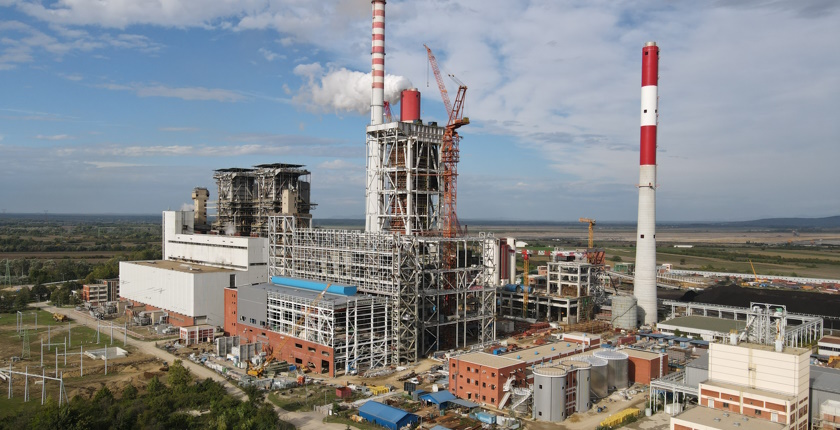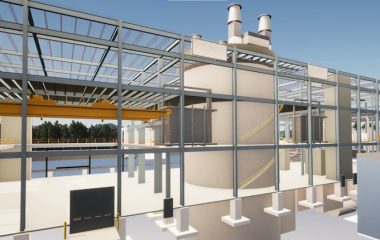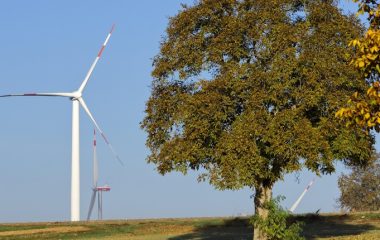
Photo: EPS
Serbian joint stock company Elektroprivreda Srbije has said that it has reduced emissions of particulate matter from its coal-fired power plants by 90% over the last 20 years. The state-owned coal and power utility added that emissions of nitrogen oxides and sulfur dioxide have also been lowered.
Elektroprivreda Srbije stressed it is one of the largest investors in Serbia and that in addition to the modernization projects and the construction of new capacities, it also invests in environmental protection.
In recent years, EPS has invested more than EUR 500 million to improve the quality of air, water, and soil, and reduce emissions of particulate matter (PM), sulfur dioxide (SO2), and nitrogen oxides (NOx) into the air.
NOx and PM emissions are below the ceilings set by NERP
EPS has implemented several projects to reduce the impact of thermal power plants on the environment, such as the reconstruction of electrofilters, the construction of flue gas desulfurization systems, the introduction of primary measures to reduce NOx, the construction of wastewater treatment plants…
As a result, the company said the total emissions of PM and NOx are below the ceilings set by the National Emission Reduction Plan (NERP).
Electrofilters have been reconstructed on the unit of all coal power plants
All 15 units in coal-fired thermal power plants have reconstructed electrofilters in an investment of EUR 100 million, resulting in the reduction of PM emissions by 90%, EPS said.
According to data from EPS’s State of the Environment Report, It released just 6,344 tons of PM particles into the air in 2022, compared to 66,626 tons registered in 2003. The year-on-year decrease was 15%. EPS stressed that according to the report from the Energy Agency of the Republic of Serbia (AERS), PM emissions are to blame for a large part of air pollution.
Several projects are being implemented to reduce NOx emissions
In 2022, emissions of NOx in thermal power plants were 34,000 tons, which is almost 2,000 tons less than the year before. The company said it intends to introduce primary measures to reduce these emissions in such units where it didn’t so far, and secondary measures in other units.
By the end of the year, EPS will finish a project for secondary measures at TPP Kolubara B, which will further reduce NOx emissions from 220 milligrams per cubic meter to below 170. The projects for primary measures are planned to be conducted in 2024 on unit A6 at TPP Nikola Tesla A (TENT A), and in 2025 on unit B2 at TENT B. Secondary measures would be finished in 2026 on A3-A6 and B1-B2.
The construction of desulfurization systems in TENT A and TENT B is EPS’ largest environmental project
The desulphurization system in Kostolac B was the first that the company’s has implemented, while the construction of similar facilities in TENT A and TENT B is underway. The system at the Kostolac B is working at full capacity, and on January 11, 2023, it received a usage permit and has been in regular operation since then, EPS said.
SO2 emissions from the power plants were reduced from more than four grams per cubic meter to under 200 milligrams. Gypsum is sold as a byproduct.
The investment is estimated at EUR 400 million
EPS stressed the construction of desulfurization systems in TENT A and TENT B is its biggest environmental project so far and that it is in the final phase. The goal is to reduce SO2 emissions in line with European Union standards, and investment is estimated at EUR 400 million.
The project is mainly financed by a loan from the Japan International Cooperation Agency (JICA). Upon the completion of the project, SO2 emissions of the four units at TENT A are expected to be cut below 200 milligrams per cubic meter, and PM emissions to less than 20 milligrams.
SO2 emissions at two units in TENT B are estimated to be cut 23 times, from three grams to 130 milligrams per cubic meter. The power plant would release less than 10 milligrams of PM particles per cubic meter instead of the current 50 milligrams, EPS said.


















Be the first one to comment on this article.